Good morning everyone, and welcome to the Mirror Gallery here on Hipsters of the Coast. Now that we’ve seen all of Ikoria: Lair of Behemoths, it’s time to begin the dive deep into some of the artwork found on these brand new cards. You may very well know this by now, but the biggest highlight for me during preview season is sifting through the hundreds of new cards and plucking out the exceptional art-related tales from among them.
One of the most often asked questions during preview season, at least within the art-collecting community, is whether or not a new card art is traditionally painted or digitally rendered. Most artists work one way or the other, but there are always exceptions to the rule. Recently we’ve seen a rising number of typically digital artists breaking their normal convention, and when that happens, we get a very exciting surprise! This will be the topic of our conversation today as we chart the course from computer to physical canvas for Magic illustrator and concept artist Tyler Jacobson with his new piece from Ikoria, Gyruda, Doom of Depths!
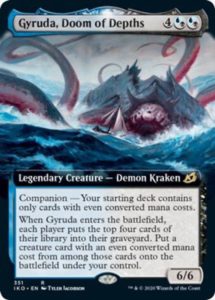
Jacobson has illustrated nearly 100 cards for Magic. He works regularly as a concept artist when Wizards of the Coast in both designing new worlds and preparing to revisit old ones. His recent concept work known as “The Broken Sword” for 2019’s Throne of Eldraine was recently nominated for Spectrum 27’s Gold Award just a few weeks ago.
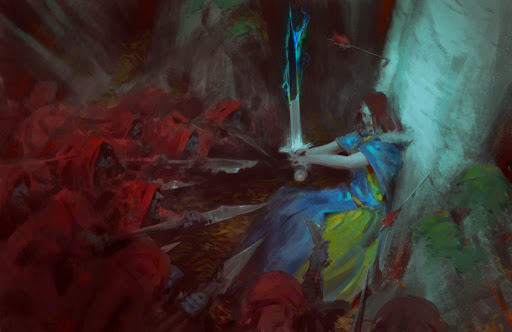
The Broken Sword by Tyler Jacobson. Digital.
When I met Tyler at Lightbox Expo last year, there was mention that he had some traditional work coming out in the future. I had no idea when that might be, but as soon as I saw Gyruda, I knew the time was finally here. I sent him a message to see if he had some time to take us through this artistic transition, and he was more than happy to tell us all about it.
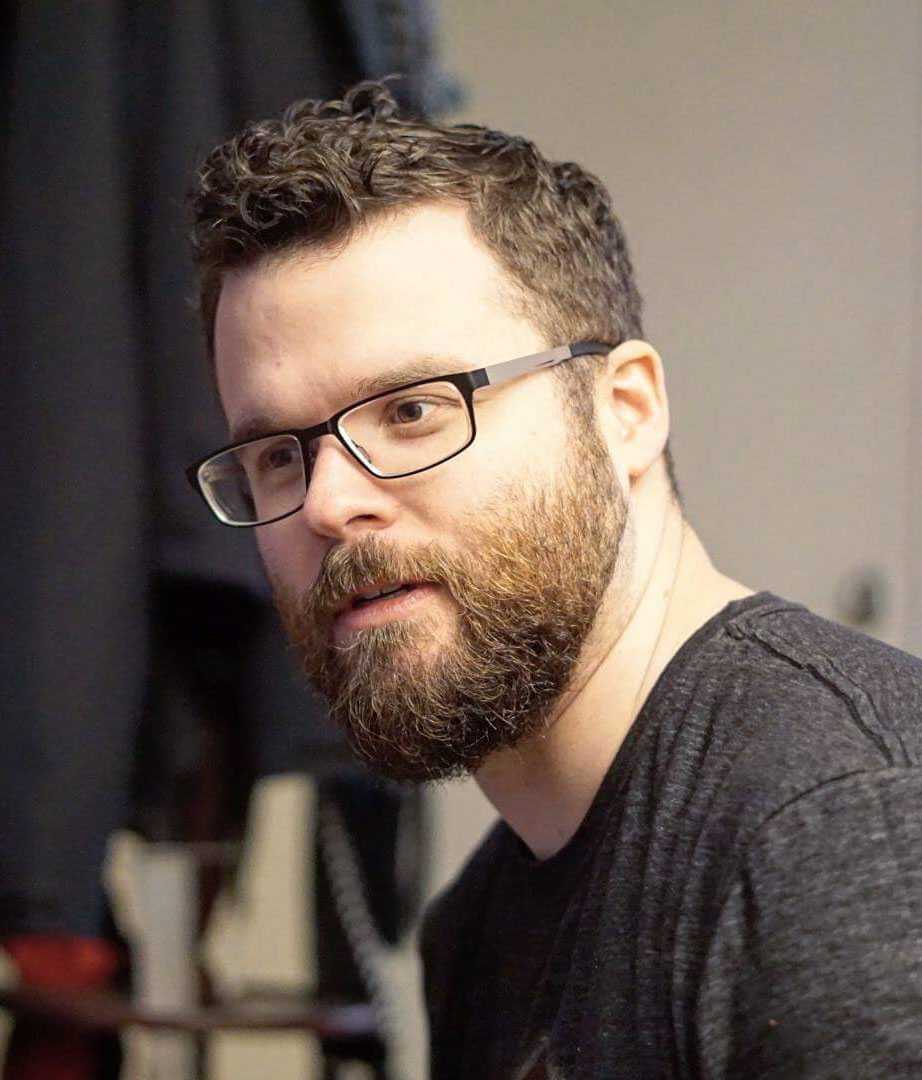
Hi Tyler, and welcome to the Mirror Gallery here on Hipsters of the Coast. As always, first things first: who are you, where are you from and what do you do?
Hi Donny. Thank you so much for this opportunity to chat about my illustration work. My name is Tyler Jacobson, and I’ve been working as a freelance illustrator for a little over ten years now. I live in Seattle, Washington, where I work out of my small home studio. My work is primarily digital, but very recently I decided to get back to my roots and do more traditional work in oils.
You’ve illustrated almost 100 cards for Magic, and have also been a vital part of several concept pushes. How did you start, and can you talk about your experience working with the game?
Magic has certainly kept me very busy over the years. I actually started my professional work with Wizards of the Coast on Dungeons & Dragons back in 2009. I got my first art order from Jon Schindehette, who was the Art Director for Dungeons and Dragons at the time. It was a small piece for Dungeon Magazine, but it was one of my very first official jobs after getting out of art school. I was sweating bullets. I look back on that first piece as a complete disaster, but it led to more work from Jon, so it must have been okay. Eventually I started getting bigger jobs from D&D, then some cover pieces for box sets and novels. Soon, my work was noticed by Jeremy Jarvis on the Magic side of the building. I started working with Jeremy on Magic in 2012 when he gave me what he was calling a “test piece”: the illustration for Sneak Attack.
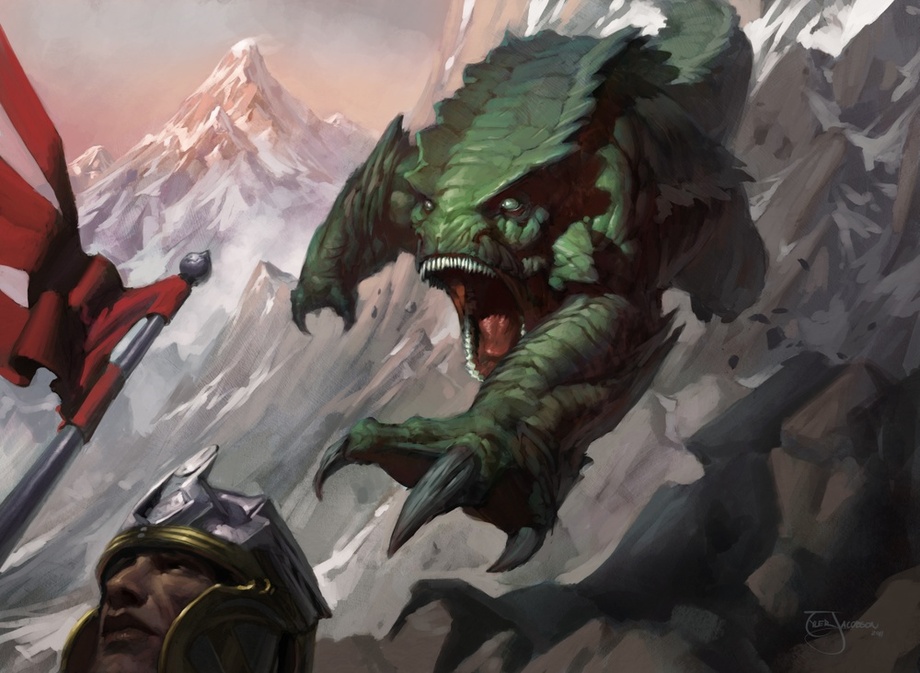
Sneak Attack by Tyler Jacobson. Digital.
However, this wasn’t published for a while, so my first card in print ended up being Mutilate for M13.
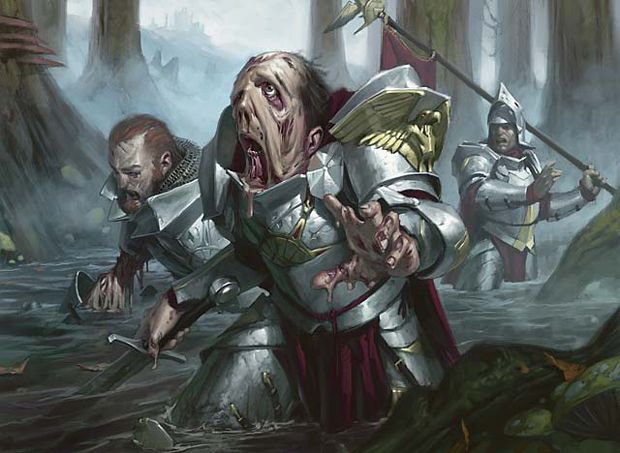
Mutilate by Tyler Jacobson. Digital.
After that, Magic became almost the entirety of my professional focus. I continued to do lots of work for various clients, including a few of the covers for D&D’s 5th Edition core books (which hold a very special place in my heart), but the work for Magic was constant. After a few years, Jeremy Jarvis brought me in-house for a concept push on the first set of Tarkir. For those who aren’t familiar, a concept push is a three-week-long project where Magic brings in five or so artists to work onsite exclusively on visual development for an upcoming set.
Over the years, along with painting all those cards, I have worked on more concept pushes than I can count. I even worked in-house for a bit as a concept artist on the Magic team. These past almost ten years working with Wizards of the Coast have really been a dream job. Getting to be part of the teams that have developed the various new planes of the Multiverse over the years is an honor. I have worked on every set in some capacity since 2012.
A part of every set since 2012? That’s incredible! Any favorite cards or illustrations along the way?
Some of my personal favorites are Huatli, Warrior Poet, Exalted Angel, and Opt.
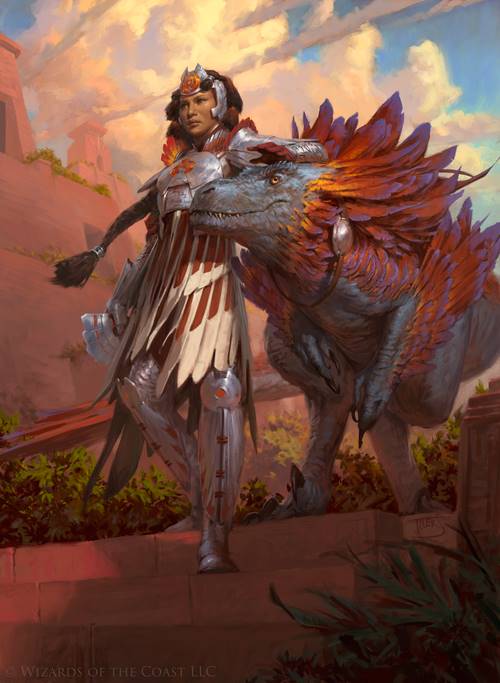
Huatli, Warrior Poet by Tyler Jacobson. Digital.
Huatli was one of the Planeswalkers I designed visually. I developed her look during the Ixalan concept push along with Angrath and the pirate costume for Vraska. So I was really excited when Cynthia Sheppard, who was the Lead Art Director for Ixalan, asked me to paint Huatli’s Planeswalker card for the set. I think I was most excited about her dinosaur familiar.
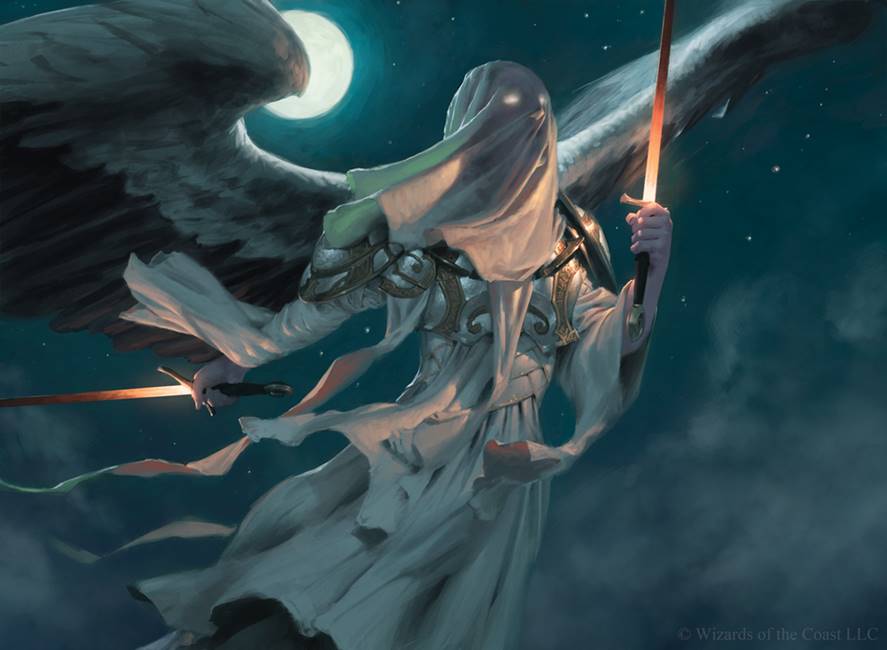
Exalted Angel by Tyler Jacobson. Digital.
Exalted Angel was one of the “breakthrough” pieces artists always talk about. I worked with Mark Winters on that illustration, and he really pushed me hard to make it special. It paid off, and I ended up with a piece I was very proud of. I really enjoy the illustration jobs that result in an exciting creative partnership. True creativity can’t happen in a vacuum.
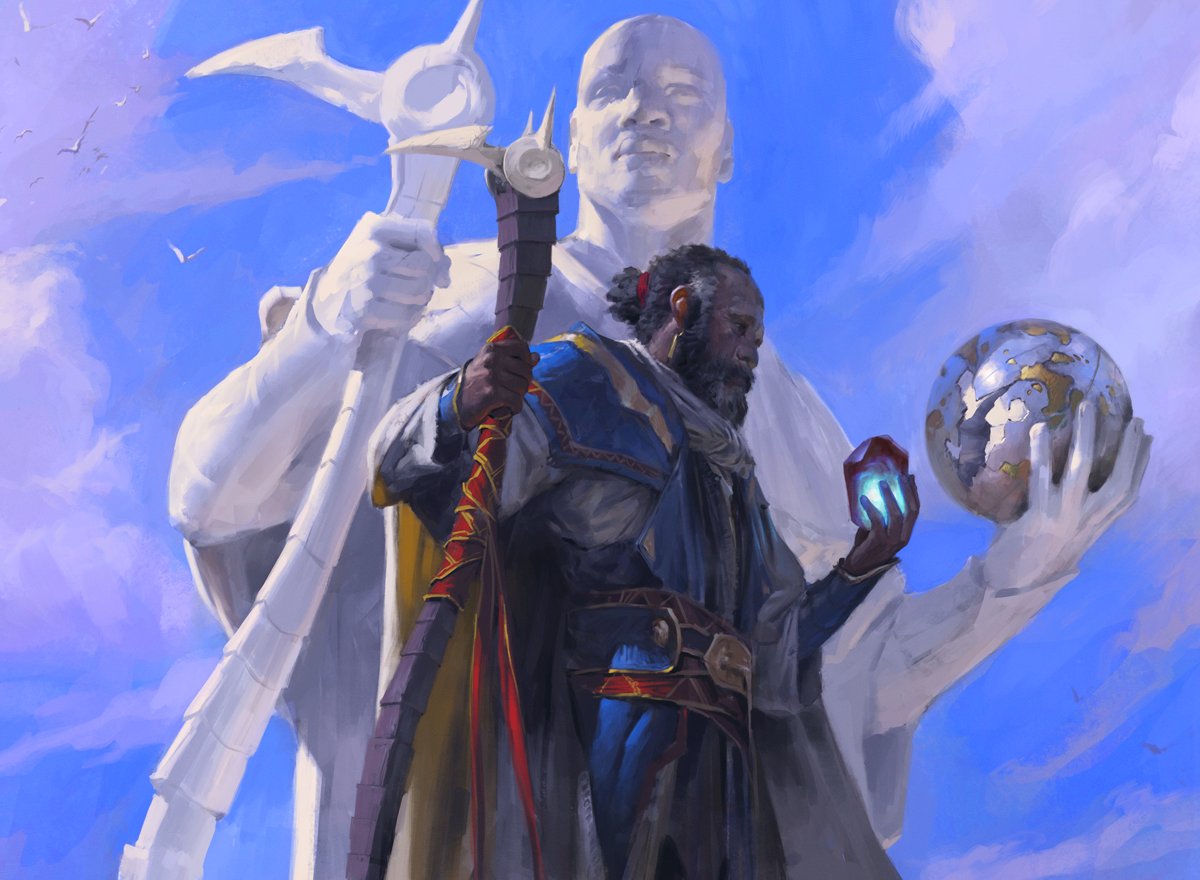
Opt by Tyler Jacobson. Digital.
Opt was a similar case to Exalted Angel in that it felt like another breakthrough piece, but this time it was different. Opt was originally a “concept plate” that I sketched up early on during the development of Dominaria. Mark Winters and I worked together, along with Kelly Digges, to create an image we could use to sell the whole idea of the set. It went over well in the meetings and eventually became the visual inspiration for what Dominaria would be.
[Authors Note: It was also nominated for the Spectrum 26 Gold Award in 2019.]
And for all of these cards and concepts, you’ve worked digitally, until now?
Much of my work has been digital, yes. However, my first few illustration jobs out of school were painted in oils. In school I studied a few different mediums, but it was oil paint that hooked me: it’s pretty forgiving, and I loved the final results. As my career took off, I found I was doing a lot of digital adjustments to my oil paintings after I photographed them. It got to a point where I was doing more than half the job digitally, so I just made the call and went 100%. I enjoyed the flexibility of digital painting; you can do a lot of iterating and adjusting on the fly. Ultimately I wouldn’t say digital painting is that much faster, but it is much more flexible. It’s extremely useful for concept work.
After roughly seven or eight years working almost exclusively in Photoshop for digital painting, I felt like getting back to my roots. I’ve missed oils paints as a medium, and there’s nothing quite like having that physical artifact of the final painting when you’re finished with a job. I wanted to slow things down a bit and get my hands into the paintings again, as well as have the opportunity to join the art market that has really gained some steam over the years. However, the reality was I wasn’t slowing down at all. I had forgotten all the work that goes into making an oil painting. I leaned hard on my good friend Chris Rahn, who has painted in oils his whole career. I bombarded him with questions about his process, and he was invaluable for my relearning of the medium. Getting back into oils wasn’t exactly like riding a bike, so I can’t thank Chris enough for all his advice.
Well this is very exciting, and I can’t wait to see what you’ve created. Let’s go through this new illustration:
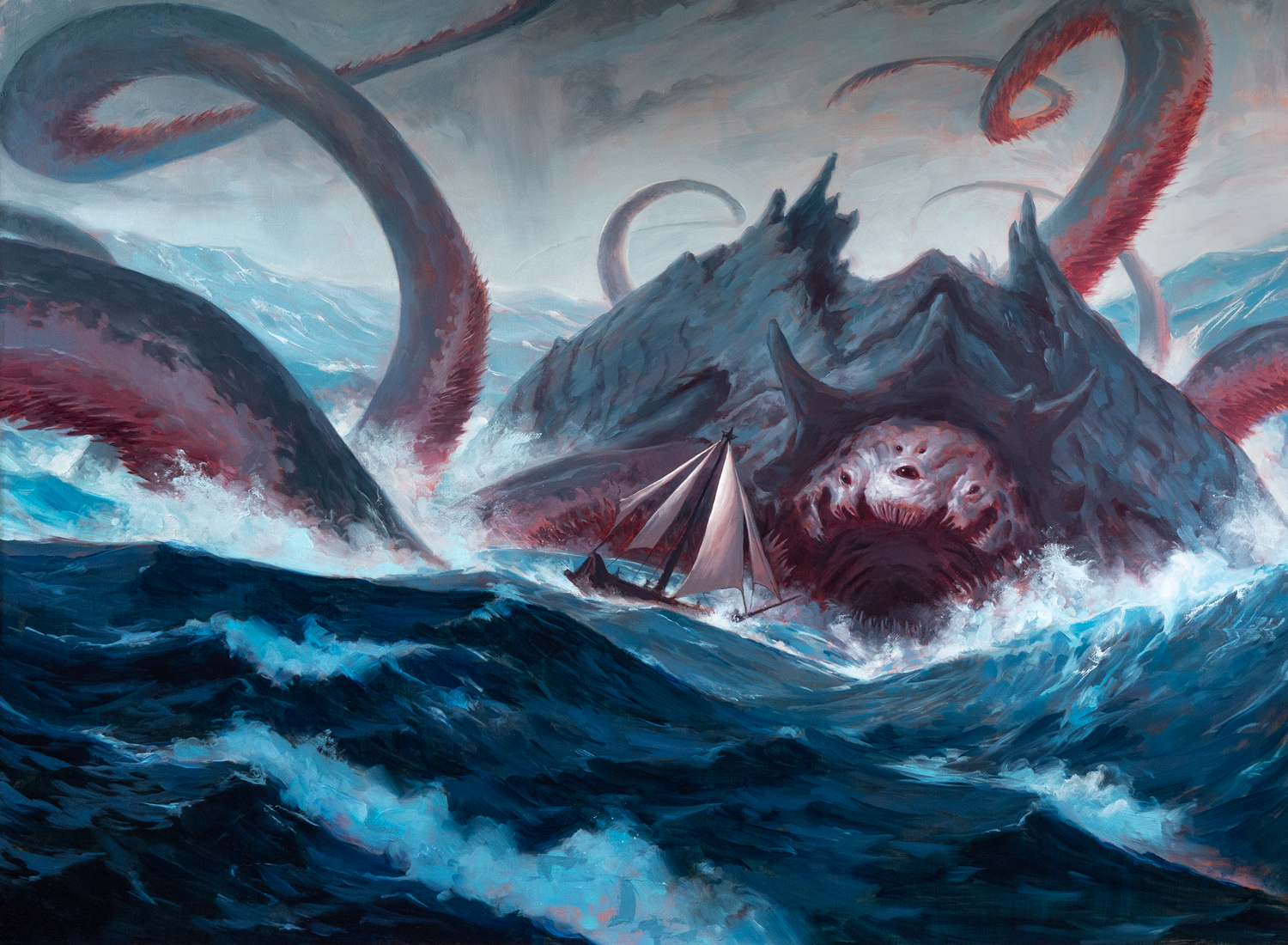
Gyruda, Doom of Depths by Tyler Jacobson, oil on cradled gesso board, 18” x 24”
When did you decide that this was going to be your first traditional Magic artwork? Before the commission, or once you read the art description?
I decided to work traditionally right before I received the art description. I had reached a point in my schedule where I had a bit of flexibility and I said to myself, “Let’s finally do one of these in oils. No better time than now.” I had been putting it off for years, and Chris Rahn had been telling me for roughly the same amount of time that I need to get back into oils. So I finally did, and it ended up being two cards—more on that later. Both pieces were art directed by Andrew Vallas and Cynthia Sheppard.
Walk us through your process. Where did you begin?
I was certainly scratching my head trying to remember my old process. Back then, I hadn’t used too many digital tools at all. I barely did anything digitally back in 2009. But now, after ten years of working digitally, I had a lot of tools in my kit. So I began the way I did with any Magic illustration: reference.
For this particular project, I looked at a lot of sea life for reference. This is something I always do when developing new creatures for Magic or D&D. Of course, “monstrous” was my target, so I ended up studying crab and squid anatomy. I also looked at a big collection of stormy ocean photos. I always stress the importance of reference, even if you’re drawing everything from imagination. I collect a large folder of reference photos for each illustration project, either from the internet or from my own photographs.
Next is the sketch phase. I started with digital sketches, planning to eventually finish the painting in oils. I did a black and white sketch in Photoshop and then used that image to make a rough color sketch.
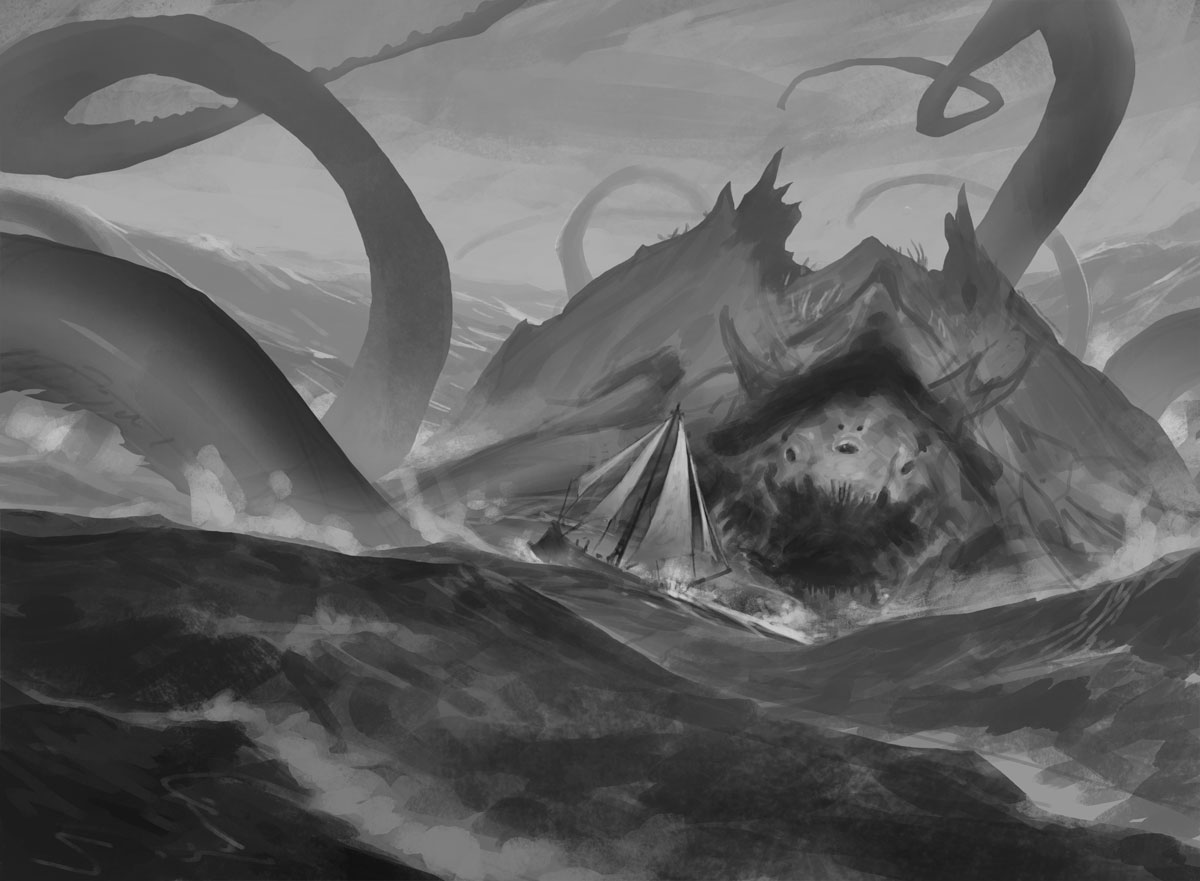
Gyruda, Doom of Depths Black and White Sketch.
I digitally painted in a rough idea of what I wanted the colors to be so that I wouldn’t get lost during the painting process. This would be my foundation and reference for the final oil painting.
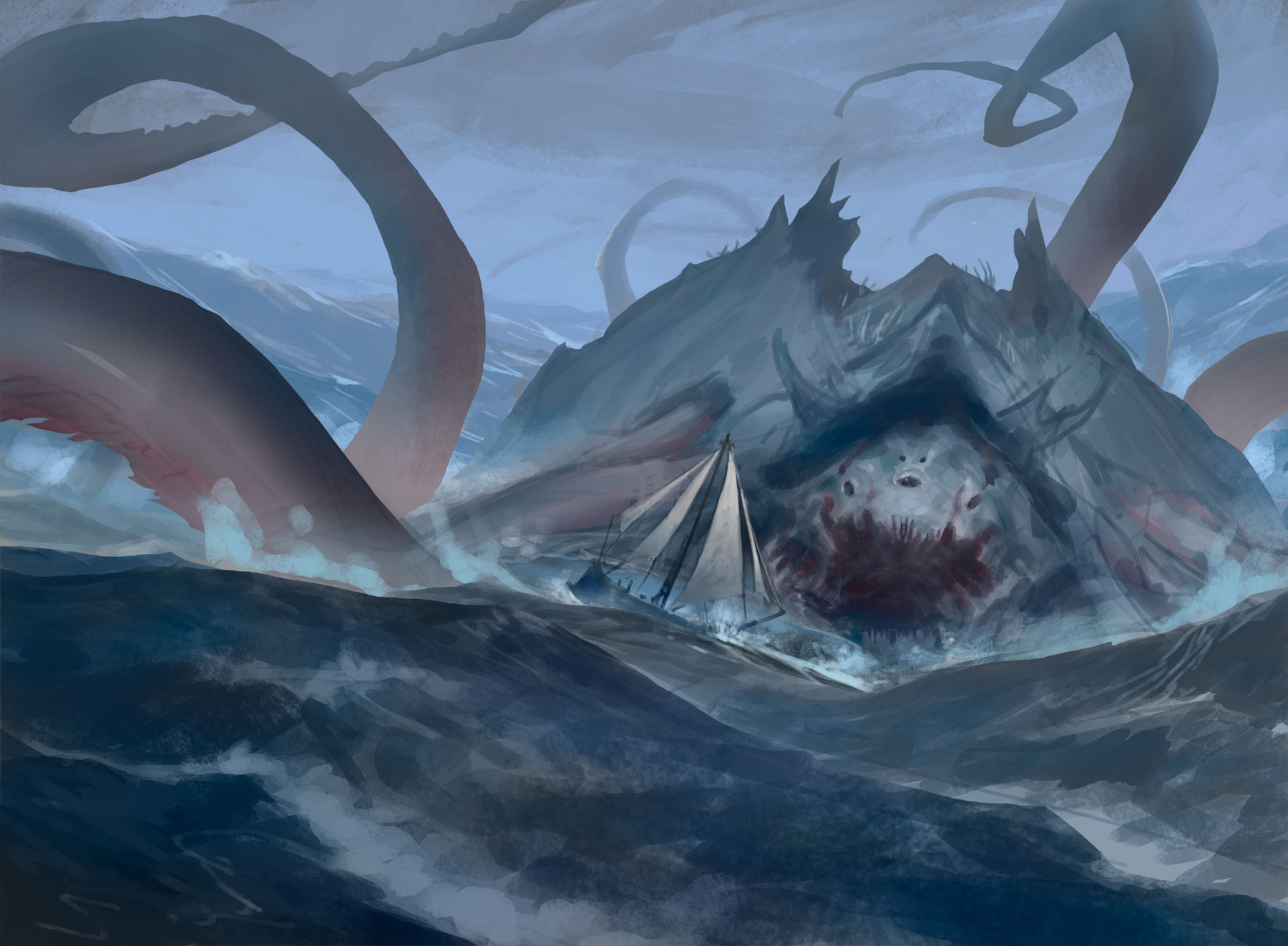
Gyruda, Doom of Depths Color Study.
Next, I printed out the color rough and taped it up onto my easel so that it would always be on hand. But first, I needed to get my drawing on to my painting surface. It’s pretty hard to paint an illustration without a drawing on the board. Like I typically did in the past, I wanted to work on a cradled board—it’s my favorite surface to work on. I used to make them myself using Masonite boards, but this time I picked up some pre-made boards. I used transfer paper to get my drawing down on the board and then used acrylic paint to stain the canvas somewhat orange.
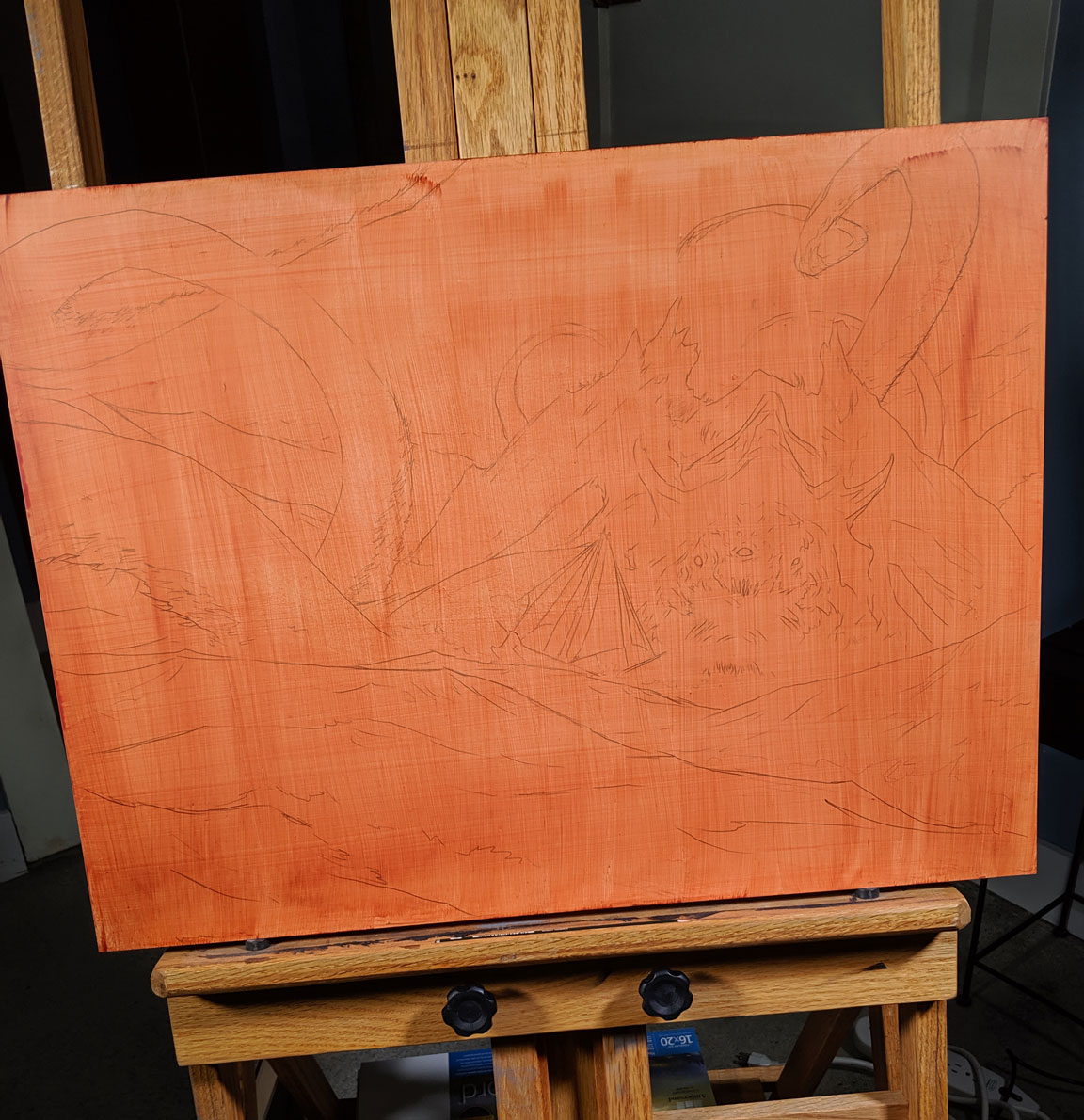
The orange would be a nice compliment to the blues I would ultimately be painting with on the final image. Staining the canvas is a great way to “kill the whites”—painting over the white of the gessoed board so that it’s easier to establish my values. Working directly on white can often make it hard to control the darks and lights of a painting. With all the white removed, I can easily control the build up to my lightest values.
Typically I try to block in the general color and value of the whole painting before I get into the details. But for this painting, I ended up painting in large sections piece by piece.
Like I mentioned before, this was very much a relearning process. In subsequent paintings I have started doing a bit more blocking in with acrylic paints to establish my general colors and values. Once everything is established I can start getting into the finer rendering and fun detail work. I really enjoy saving the glints in eyes until the very end. Putting the signature on is always nice, too, since it means you’re finished.
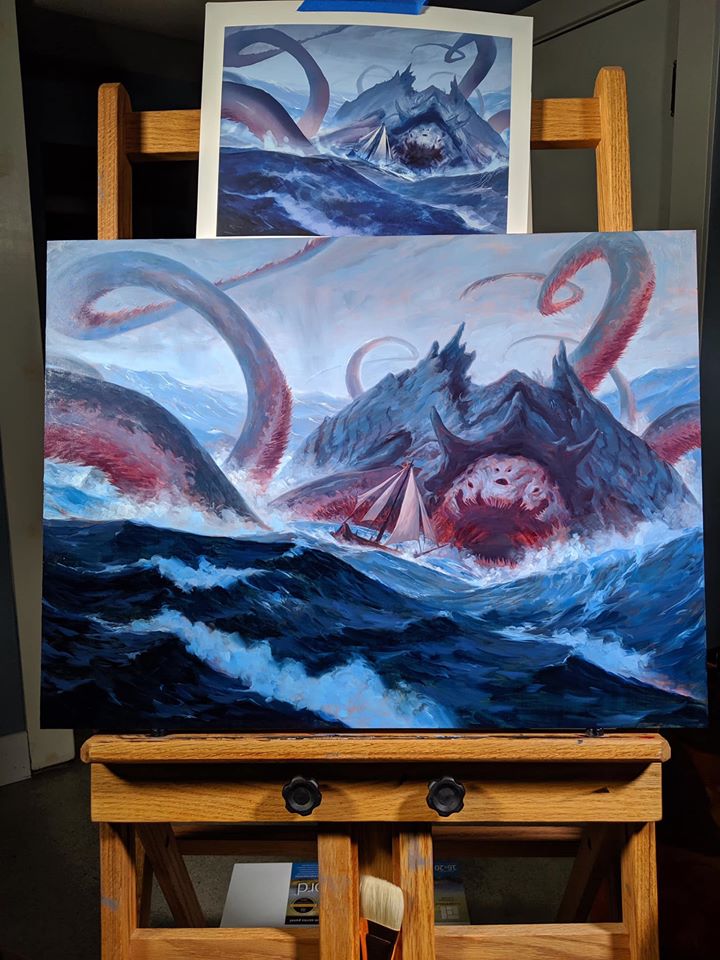
What would you say the biggest difference is between this process and the way you’ve worked previously for Magic?
The process is ultimately very similar. The biggest difference is you can’t do big course corrections on a traditional painting like you can on a digital painting. So it requires that you do a lot more planning up front to save yourself headaches later on. This is where digital tools really helped out. I could visualize the painting in my color sketch and make significant changes early on if I needed. This makes the final painting go a lot smoother. I tend to spend more time in the preproduction phase of an illustration than I do on the actual painting part. If you set it up right, the physical painting stage can go pretty quickly.
Any particular challenges or triumphs you can share?
The biggest challenge I found I was having to learn how to mix colors again. It was all well and good to have a nice printed color sketch above my easel, but it wasn’t too helpful if I couldn’t actually mix the colors to match it. There was definitely a bit of trial and error before I really got a grip on mixing colors accurately again. Initially I had laid out a selection of colors on my palette that I was used to from back in my early illustration days. It worked pretty well on the Gyruda painting, but I have painted roughly eight more Magic cards in oils since then and I have made significant changes to my palette colors at this point. Fantasy illustrations demand some pretty vibrant colors at times, it turns out.
What’s it feel like, having your first traditional Magic painting out there in the wild?
It’s excellent. I have loved working with Magic over the years and I am always looking forward to my next job with them. Now I can rest happy with the knowledge that I have created an actual physical object that others can appreciate, something that will hopefully stand the test of time.
It looks really incredible man. And I’ve got my fingers crossed already, but can we expect more traditional Magic paintings in the future?
Absolutely. With the exception of a few, nearly all the card illustrations I have done since Gyruda have been in oils, including my other card from Ikoria: Lair of Behemoths, Splendid Ultimatum.
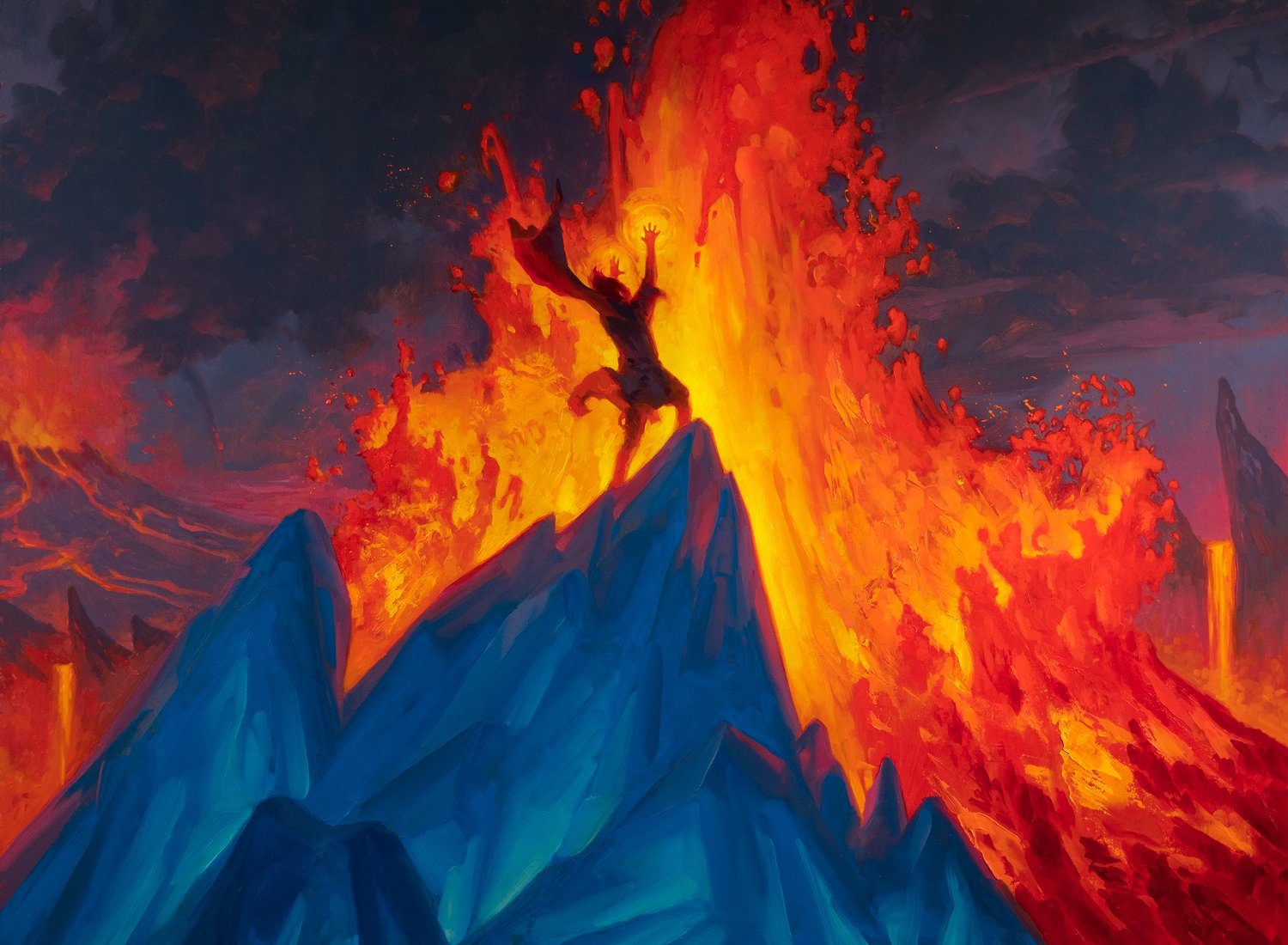
Splendid Ultimatum by Tyler Jacobson, oil on cradled gesso board, 18” x 24”
Fantastic! And where can folks find you online to follow your work or buy your art?
You can find me on Instagram: @tylerjacobsonart, Twitter: @jacobsontyler. And at my website: www.tylerjacobsonart.com.
Tyler, thanks so much for taking us on your Ikorian artistic journey. This has been an incredible insight into your process, and we can’t wait to see all the exciting stuff you have coming in the future!
I hope you all enjoyed this behind the brush glimpse at this brand piece of artwork for Ikoria: Lair of Behemoths. It sure sounds like Tyler has some seriously cool stuff in the works, and they’ll surely be something to keep on the lookout for as 2020 sails on.
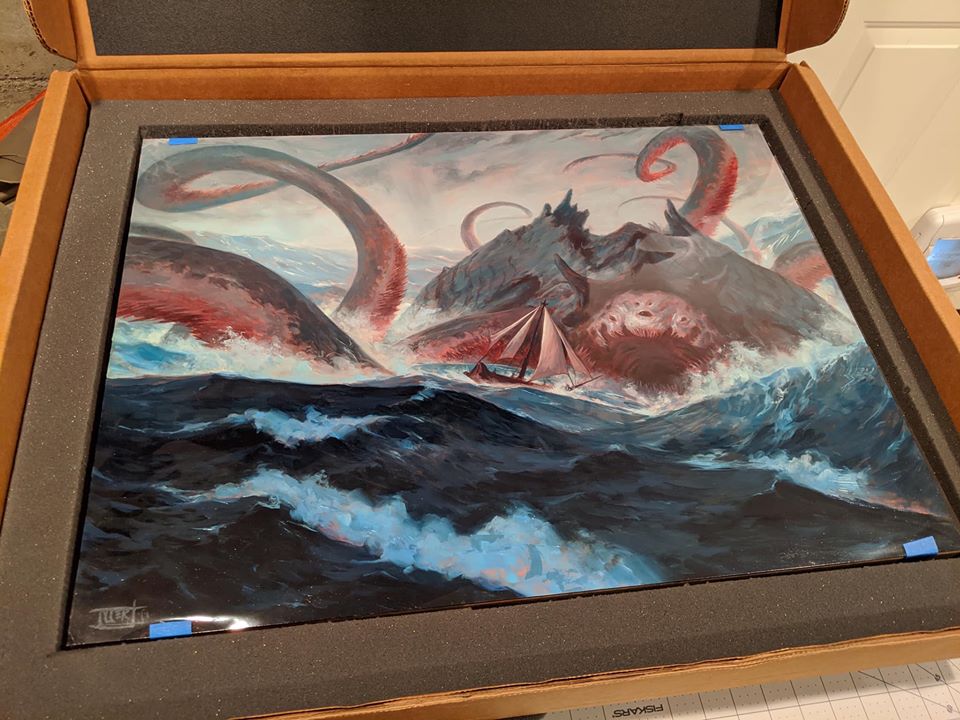
As I was writing this article, the original painting for Gyruda was sold on the MTG Art Market, ending April 8th, 2020, and realized a fantastic final price of $3,500! Let’s hope this further encourages Tyler to keep painting in oils. I think I speak for all us when I say we can’t wait to see what’s next.
I’ve got a lot of things planned for the next few weeks, from Grand Art Tours to a visit from my friend, Magic illustrator, and Ikoria concept artist Jesper Ejsing to talk about all thirteen of his new Ikoria: Lair of Behemoths and Ikoria Commander card illustrations. We’ll go behind the scenes, hear stories, see a lot of great artwork along the way. And remember, to see original #mtgart and other #vorthos related things, follow me on Twitter. Feel free to ask questions or retweet to continue the conversation. Thanks and see you next time!
Donny Caltrider has been playing Magic since 2002 and collecting original Magic art since 2017. He has an M.A. in Museum Studies from Johns Hopkins University and enjoys telling stories about art, objects, and the intersection of fantasy with real-life. You can find him on Twitter talking about #mtgart, museums, and other #vorthos related goodness. Follow along and continue the conversation!

